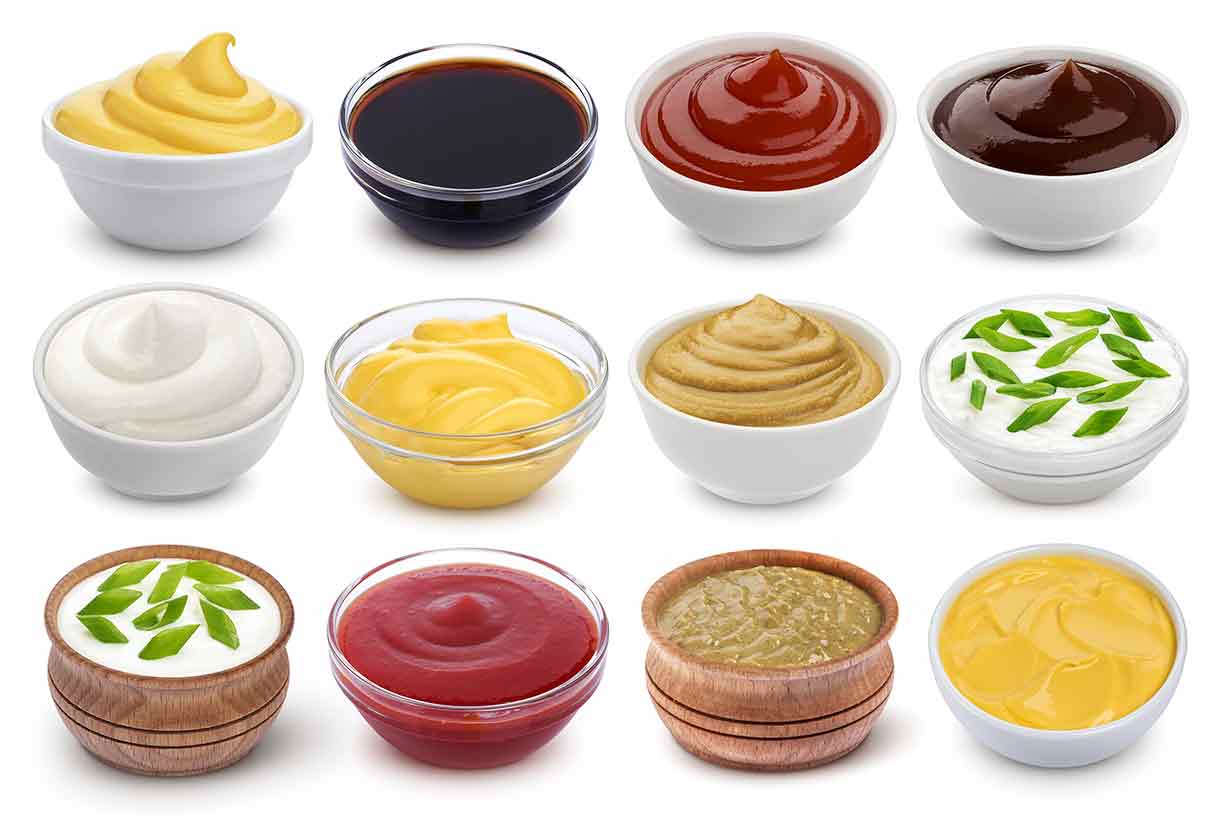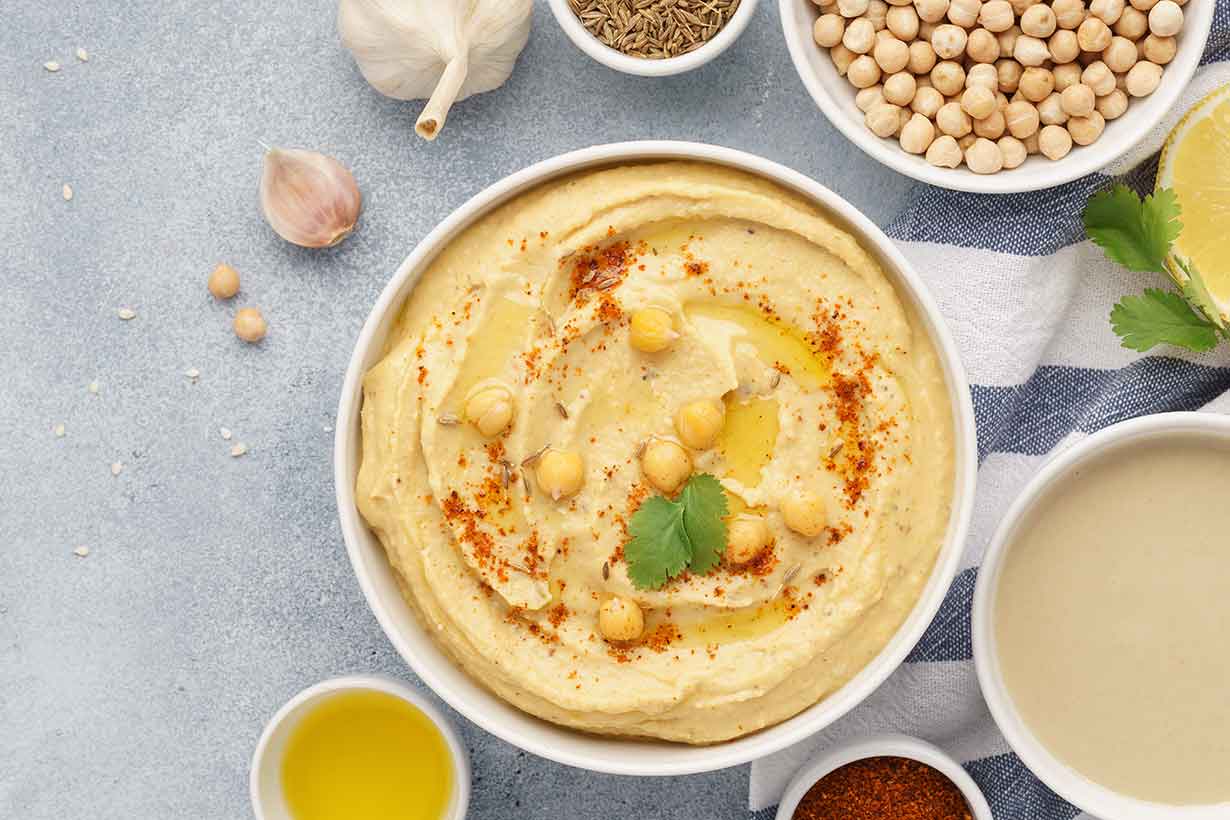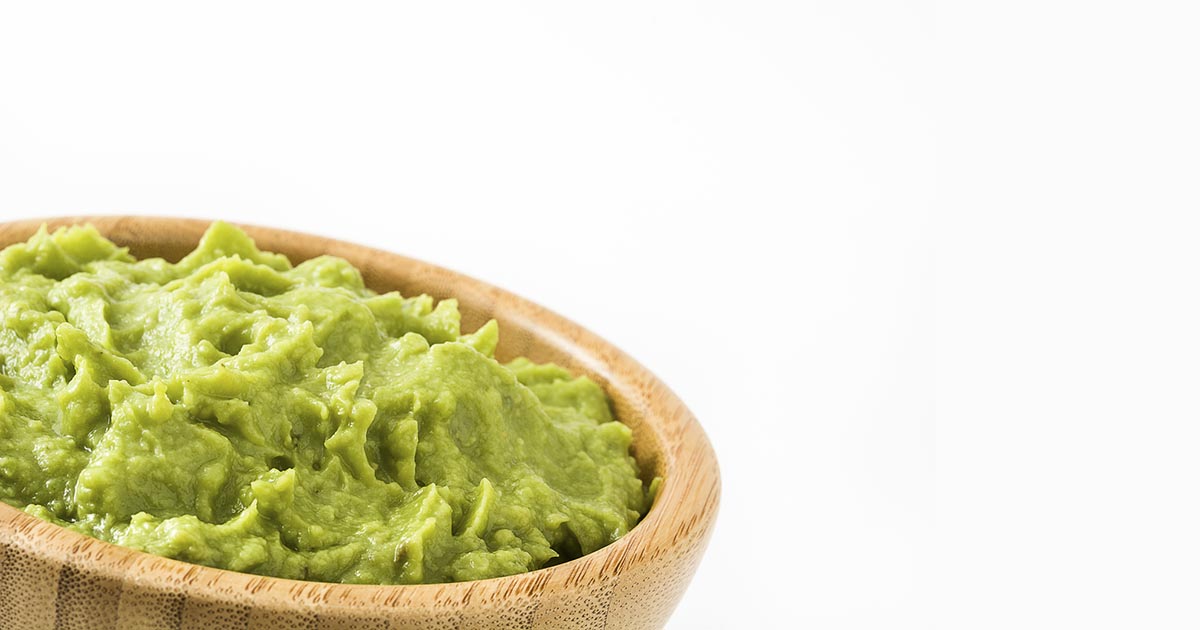Salsa is a delicious and well-known Mexican condiment.
But do the health benefits match up to the taste?
This article looks at the nutrition properties of salsa and whether or not it is a healthy choice.
Additionally, we look at some of the best ways to use it.
What Is Salsa?
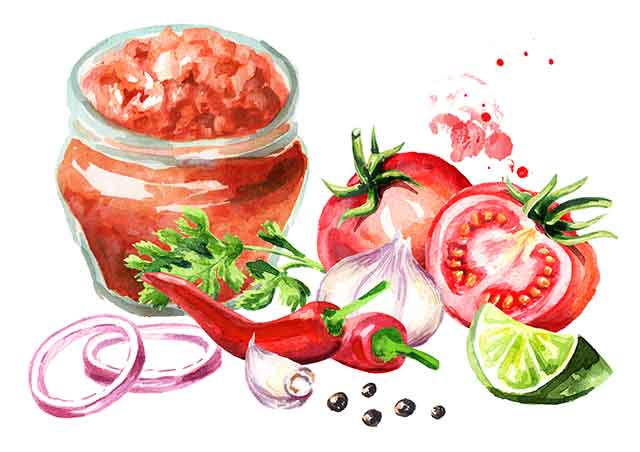
Salsa is a Spanish word that translates simply to “sauce,” and it originates from the country of Mexico.
Generally speaking, salsa is mainly used as a dip or sauce, and it is one of the most popular condiments in the world.
There are numerous different styles of salsa and recipes vary between traditional and modern and differ on a regional basis.
However, for this article, we will focus on the most popular and well known of them all; Salsa roja.
Salsa roja is a tomato-based, red and spicy sauce that usually contains the following ingredients;
- Tomatoes
- Onions
- Garlic
- Chili peppers
- Cilantro
- Salt
- Pepper
Alongside other spicy condiments like harissa and gochujang, salsa has an enjoyable and very flavorful taste.
Varieties
This type of salsa also comes in three different variations;
- Salsa adada: the ingredients are roasted in a cast iron pan and then ground/blended.
- Salsa cruda: the ingredients in this salsa are chopped and mixed and then served raw.
- Salsa cocida: all the ingredients are ground after being cooked together on the stove.
Benefits of Salsa
Due to the ingredient profile, salsa offers several nutritional benefits.
1) Offers a Good Nutrition Profile
Salsa is relatively low in calories, but it still manages to offer a good mix of vitamins and minerals.
The tables below show the full nutritional values for salsa, based on data from the NCC Food and Nutrient Database.
| Calories/Nutrient | Amount |
|---|---|
| Calories | 14.06 kcal |
| Carbohydrate | 3.12 g |
| Fiber | 0.71 g |
| Sugars | 1.82 g |
| Fat | 0.12 g |
| Saturated Fat | 0.02 g |
| Monounsaturated Fat | 0.02 g |
| Polyunsaturated Fat | 0.05 g |
| Omega-3 Fatty Acids | 0.01 g |
| Omega-6 Fatty Acids | 0.05 g |
| Protein | 0.59 g |
As we can see, salsa is low in calories, fat, and protein. It also provides a modest amount of carbohydrate.
| Vitamin | Amount | % DV |
|---|---|---|
| Vitamin C | 17.63 mg | 29.4 % |
| Vitamin K | 5.63 mcg | 7.0 % |
| Pyridoxine (B6) | 0.08 mg | 4.2 % |
| Folate | 9.50 mcg | 2.4 % |
| Vitamin A | 20.08 mcg RAE | 2.2 % |
| Thiamin (B1) | 0.02 mg | 1.6 % |
| Niacin (B3) | 0.02 mg | 1.6 % |
| Riboflavin (B2) | 0.02 mg | 1.1 % |
| Vitamin E | 0.21 mg | 1.1 % |
| Choline | 3.95 mg | 0.7 % |
| Pantothenic Acid (B5) | 0.06 mg | 0.6 % |
| Mineral | Amount | % DV |
|---|---|---|
| Sodium | 331 mg | 13.8 % |
| Potassium | 127 mg | 3.6 % |
| Manganese | 0.07 mg | 3.6 % |
| Copper | 0.04 mg | 2.0 % |
| Magnesium | 7.16 mg | 1.8 % |
| Phosphorus | 15.27 mg | 1.5 % |
| Iron | 0.21 mg | 1.2 % |
| Calcium | 8.37 mg | 0.8 % |
| Zinc | 0.10 mg | 0.7 % |
| Selenium | 0.10 mcg | 0.1 % |
2) High In Vitamin C
As shown in the nutritional values, vitamin C is the most concentrated nutrient that salsa offers.
Per 100 grams of salsa, there is 17.6 mg of vitamin C, which is equal to 29.5% of the daily value (recommended intake).
Vitamin C is vital for the body’s ability to manufacture and repair blood vessels, collagen, skin, teeth, and more (1).
Additionally, the vitamin has antioxidant properties that can help to reduce oxidative stress and free radical damage (2).
3) Salsa Is One of the Best Sources of Lycopene
Red-fleshed foods like grapefruit and tomatoes contain a carotenoid (bioactive compound) called lycopene. Among these sources, tomatoes offer more dietary lycopene than any other type of food (3).
Studies show that lycopene has a wide-ranging number of potential beneficial effects on health, and some of these include;
- Research shows that increasing lycopene intake can improve the UV resistance of human skin (4, 5).
- Systematic reviews and meta-analyses suggest that lycopene may help to lower the risk of prostate cancer (6, 7).
- Further reviews of the existing literature, including systematic reviews, suggest that higher intake of lycopene may decrease the risk of metabolic syndrome and cardiovascular disease (8, 9).
Notably, lycopene is not very bioavailable in raw tomatoes. On this note, research trials demonstrate that cooked/processed tomatoes have a much more significant effect on blood lycopene levels than fresh tomatoes do (10, 11, 12).
Since salsa (usually) uses cooked tomatoes, this makes it an excellent option for dietary lycopene.
4) Salsa Is Delicious, and It’s One of the Healthiest Condiment Choices
With its mix of tomato, onions, herbs, chili peppers, and salt; salsa tastes delicious.
Furthermore, unlike most condiments, traditional salsa recipes are very much based on unrefined foods.
In other words; salsa doesn’t contain added sugars or large amounts of oil like most condiments do.
For this reason, salsa is a healthier choice than most other popular sauces.
Potential Drawbacks
While salsa can be quite healthy, not every store-bought product has an ideal nutrient profile.
There are also some other concerns that can be an issue.
1) Some Salsa Products Contain Unhealthy Ingredients
Traditional salsa gets its natural sweetness from the tomatoes present, but some store-bought options use large amounts of added sugar or corn syrup.
Additionally, some salsa products unnecessarily contain vegetable oils too.
Both of these ingredients are just cheap fillers, and salsa products that care about the traditional recipe (and health) won’t contain them.
In short; check the ingredients label before you buy.
2) High Salt Content (Sodium)
With more than 330 mg of sodium (or 825 mg salt) per 100 grams, salsa is not one of the best options for those on low-salt diets.
There is nothing inherently wrong with salt; sodium is an essential mineral that has several vital functions in our body (13).
However, large amounts of salt can significantly increase blood pressure in ‘salt-sensitive’ individuals (14, 15).
As a result, people with sensitivity to salt may wish to look for ‘low salt’ salsa options. These products are widely available.
3) The Health Merits of Salsa Depend On What You Eat It With
On its own, salsa is reasonably nutritious, but it does depend on what we consume it with.
For instance, tortilla chips are probably the most common salsa pairing, and they’re not one of the healthiest choices around.
On the other hand, using salsa as a condiment with a main meal can be both tasty and healthy.
4) Food Poisoning (Raw Salsa)
Generally speaking, salsa is very safe to eat and seldom causes problems.
However, there have been some food poisoning cases with the salsa cruda (raw) variety of the condiment.
The Centers for Disease Control and Prevention’s Foodborne Disease Outbreak Surveillance System (FDOSS) identified more than 136 foodborne disease outbreaks between the years 1973 and 2008 attributed to either salsa or guacamole (16).
Furthermore, these 136 outbreaks were responsible for an estimated 5,658 illnesses.
Studies show that salmonella bacteria can survive and grow in salsa when it is not adequately stored and refrigerated (17, 18).
Unfortunately, prepared and packaged salads are notorious for potentially harboring foodborne illnesses such as salmonella. Proper hygiene and storage during production are crucial (17).
That said, it is worth noting that millions of people consume salsa each year without issue, so these food poisoning cases are rare.
Healthier Ways To Use Salsa
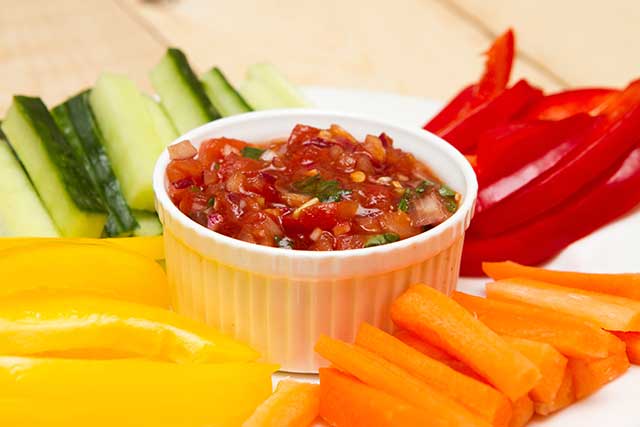
Looking for ideas on how to use salsa without needing tortilla chips?
On the positive side, there are many ways to eat salsa that are simple to prepare, nutritious, and tasty.
As a Sauce For Meat-Based Dishes
There are a wide variety of cooking sauces designed to compliment meat-based dishes.
However, we can use salsa in the same way, and this is probably a lot healthier than the most common sauce options.
To use salsa in this way, all we have to do is heat the salsa on a stove and then pour it over the top of our meal.
This way of using the condiment is very simple, and it can add a lot of flavor to any dish.
Salad Dressing
Instead of using a typical oil-based salad dressing, salsa can offer a lot of flavor to any salad.
Since most store-bought salad dressings are full of sugar and vegetable oil, using salsa in this way can also improve the nutritional properties of a salad.
As a Dip
People often use salsa as a dip with tortilla chips.
However, there is no limit to the number of foods that we can use it alongside.
For example, here are some food pairings that a salsa dip can work well with;
- Beef jerky
- Boiled eggs
- Meat
- Roasted root vegetables/tubers
- Vegetable chips
Also, salsa could be a side-serving alongside almost any meal – it will add a good amount of flavor to most foods.
Final Thoughts
Salsa is a reasonably nutritious condiment that can enhance the taste of many different foods.
Due to the ingredients, it also offers some potential health benefits.
Since this world-famous condiment is also low-calorie, low-carb, low-fat, and vegan, it can fit in with most diets.
As a bonus, it tastes delicious and works well with almost any food.
For another spicy condiment, see this nutritional guide to hot sauce.
For more on international condiments, see this in-depth guide to kimchi.

